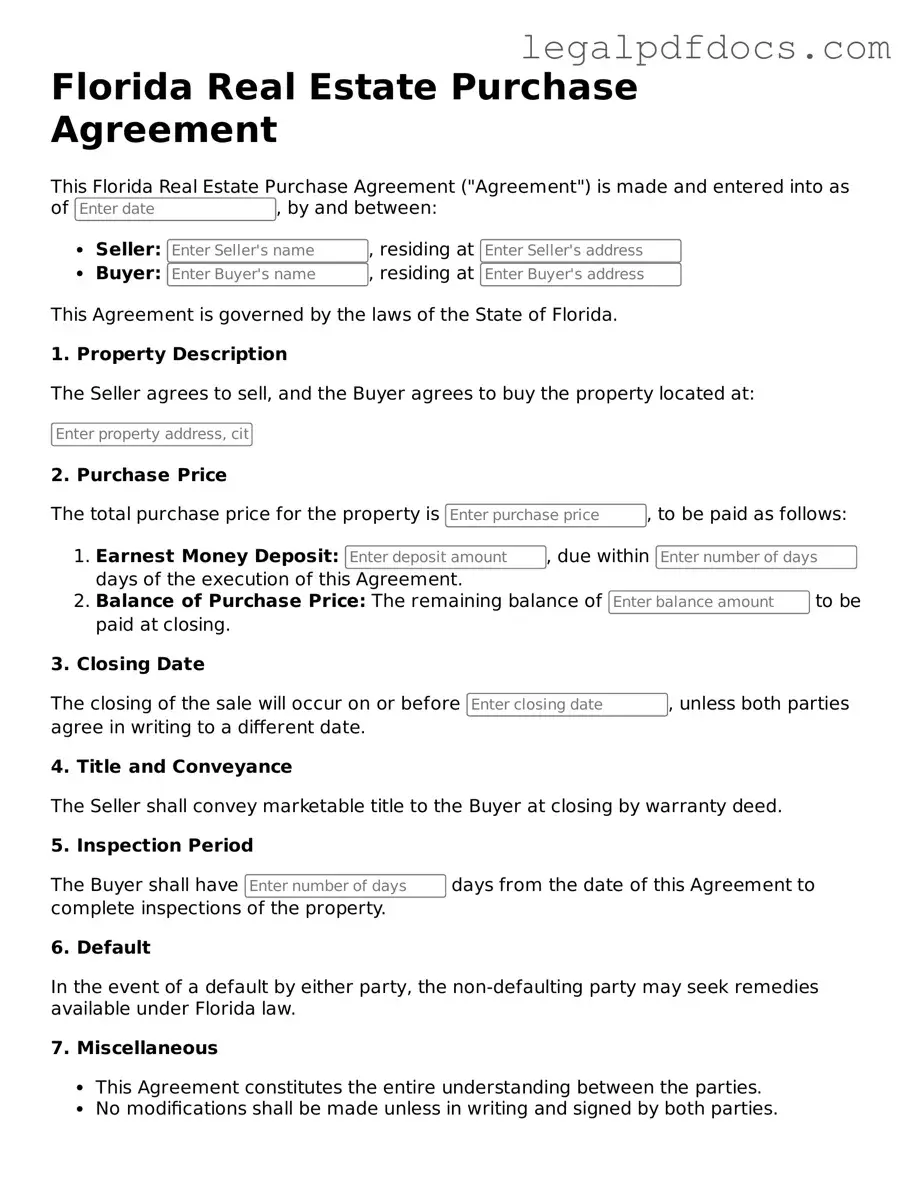Official Real Estate Purchase Agreement Form for Florida
The Florida Real Estate Purchase Agreement is a legal document that outlines the terms and conditions for buying and selling property in Florida. This form serves as a binding contract between the buyer and seller, detailing essential aspects such as purchase price, financing, and closing dates. Understanding this agreement is crucial for a smooth real estate transaction.
Ready to get started? Fill out the form by clicking the button below.
Open Real Estate Purchase Agreement Editor Here
